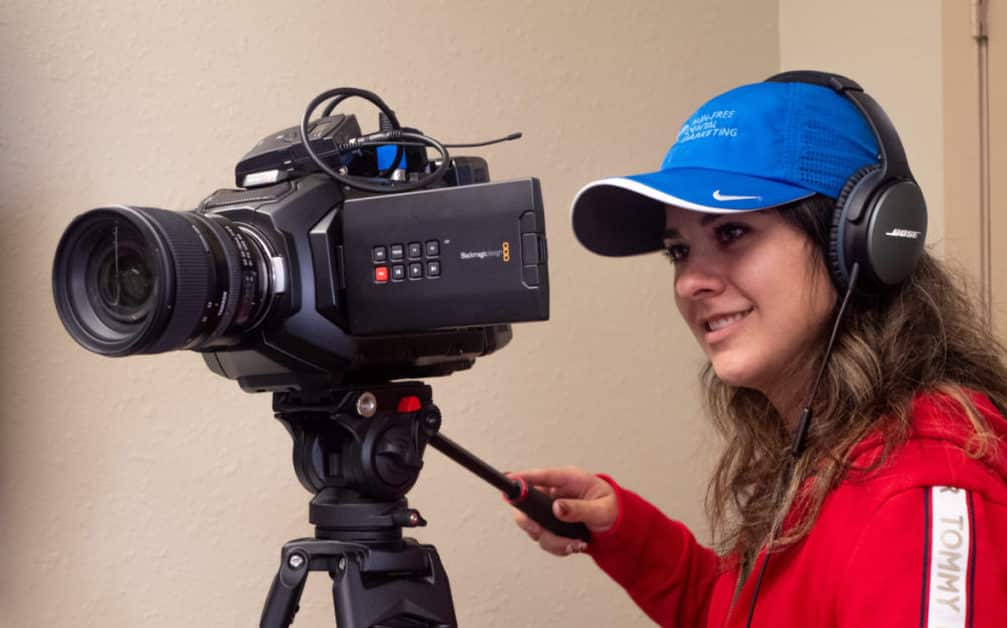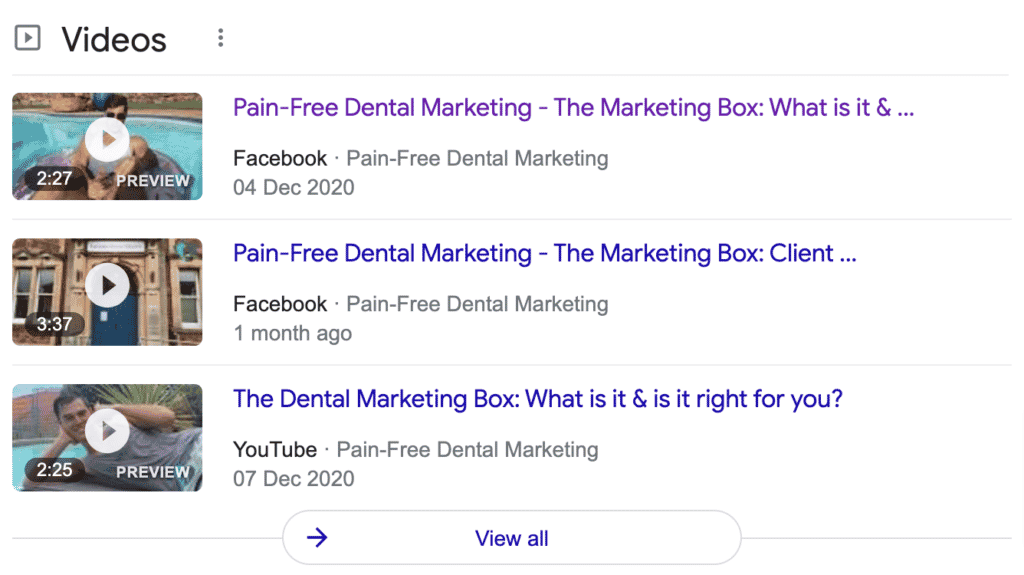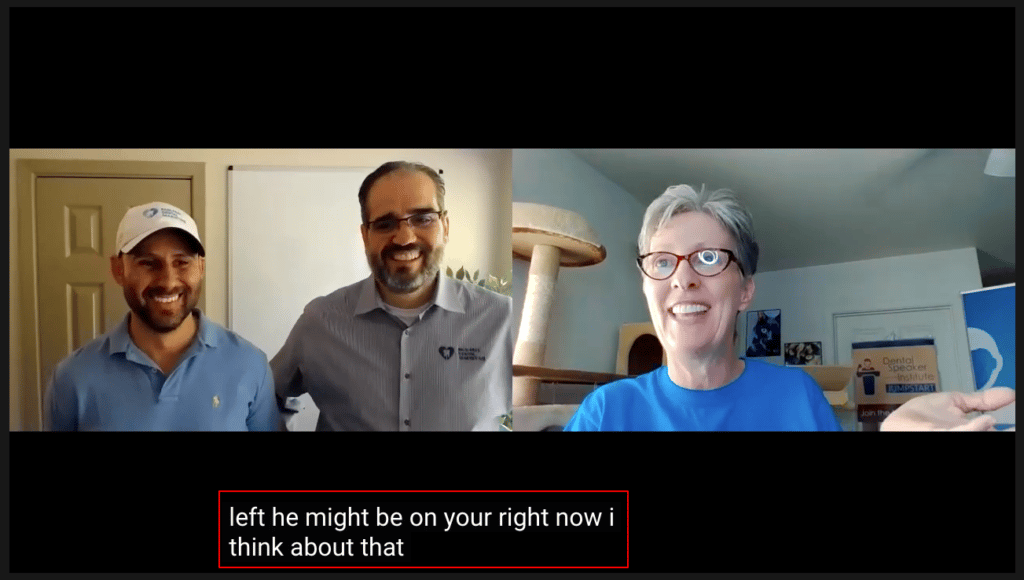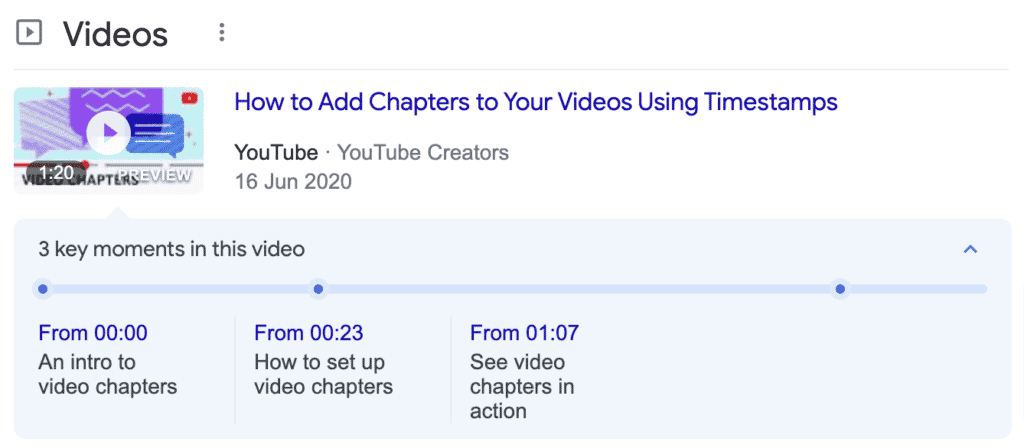Dental SEO: How-To Optimize Your Videos To Get More Traffic
As a Dental Marketing Agency, optimizing written and image content has always been a part of our SEO strategy for dentists. Yet, we couldn’t help but notice the rise of video content in recent years and how it has become an intricate part of how dentists engage with potential patients. A statistical analysis by InVideo shows that […]

As a Dental Marketing Agency, optimizing written and image content has always been a part of our SEO strategy for dentists. Yet, we couldn’t help but notice the rise of video content in recent years and how it has become an intricate part of how dentists engage with potential patients. A statistical analysis by InVideo shows that video content is 12 times more successful than other types of content. In fact, it generates higher engagement rates than both text and image content combined!
In this article, our dental SEO experts cover all of the essential tips and tricks for How-To Optimize Your Dental Marketing Videos To Get More Traffic and keep viewers engaged with your content for longer. These tips are a collection of Google best practices and methods we have tested as a dental marketing agency. If done right, it will help boost your marketing efforts!
Before we start: If you need help on How-To capture video content for your dental practice, you’ll find everything you need to know on our DIY dental marketing website! We created this website to help dentists grow their businesses and get more patients! Ready? Let’s Go!!
Why Video SEO is Important
Creating engaging video content is only half of the work when creating a successful marketing campaign. Optimizing video content to appear on the first page of Google or to ensure your video content follows Google best practices is a whole other ball game, and that’s why Video SEO is so important!

What is video SEO?
Video SEO simply refers to optimizing your video for indexing and ranking on search engine results pages for relevant keyword searches. In its most basic form, Video SEO is everything we can do as a dental marketing agency to make sure the video content we create appears on the first page of Google and gets as many views as possible.
Signals Google Looks For on a Web Page & Video
Google crawls a page to identify if it has a video, and then it looks for signals that can help it determine what the video is all about and if it will be valuable to a user on their platform. These signals allow the video to be surfaced in relevant searches.
Signals Google uses to understand video content:
- On-page: Title, headings, and content in the vicinity of the video.
- Video Details: Title of the video, the description & tags used.
- Engagement: How long does a viewer watch your video.
- Referral Links: Signals sent by other websites linking to the video.
- Structured Markup: Communicates the video metadata to Google.
- Video Files: Google can open the file to see the audio and visual content.
Video SEO refers to adding the correct elements on a page and each video of your website to ensure that the signals above are communicated to Google while sticking to their best practices! If you want to learn more about implementing on-page SEO before starting with video SEO, here’s our Ultimate Guide to Dental SEO.
How To Optimize Video Content for Search
As with all things dental SEO, Google has best practices for optimizing video content to ensure their users have the best experience. Below we will discuss some of the most important dental SEO practices for video content. Here’s how you can optimize your online videos to ensure the best performance:
1.) Titles & Thumbnails
Thumbnails are usually the first thing viewers see when they find a video, and 90% of the best-performing videos on YouTube have custom thumbnails. Thumbnails can encourage viewers to view your videos, build anticipation and help viewers make decisions!
Tips for optimizing video titles:
- Write unique titles that spark curiosity but also include keywords. E.g., “How to get more patients with Postcards” or “The best dental marketing strategies for 2022.”
- Keep titles concise (60 characters) with the most important information upfront. SEO Tip: Google emphasizes what is at the start of your title.
- If you wish to add episode numbers or branding, this should be towards the end of your title.
- Check that your titles don’t get cut off in suggested videos, search results, and mobile. If people can’t see what your title is, they are less likely to click on it!
Tips for optimizing video thumbnails:
- Apply the “rule of thirds” to compose compelling images, then overlay them with branding and descriptive text.
- Make sure your thumbnail resolution is as high as possible, but keep it under the 2MB.
- Specs: 1280 x 720 pixels (16:9 ratio) as a .JPG, .GIF, .BMP, or .PNG.
- See if the thumbnail would stand out among other thumbnails.
NB: Remember that viewers will leave quickly if your thumbnails and titles don’t represent what’s inside the video. This can reduce your visibility as YouTube can tell if viewers click on your video and stick around to see the end. If a viewer stays longer, it shows Google that the title and thumbnail represent what the video is about, which will boost the credibility of your content. This sends the right signals to Google, which will help your video gain more organic visibility!

2.) Descriptions and Hashtags
Descriptions help viewers locate, learn about and decide if they want to view your videos. The description of your video can be divided into two parts: what viewers see before clicking “Show More” and what they see afterward.
How to optimize video descriptions:
- The first few lines of text must explain the purpose of the video using natural language and search-friendly keywords. Make sure every video has a unique description. This makes it easier for search engines to locate and makes it stand out from other similar videos.
- The rest of the text should be used (what appears after they click See more) to provide additional characters like your channel’s purpose, social links, etc. You can also provide timestamps here. Remember to set timestamps for key steps if the video is a “how-to” or longer than 5 minutes. E.g., 0:30 – How to create a Facebook account for a dental practice, 3:55 – How to run your first three targeted ads for dental implants, 8:43 – How to track the performance of your ads. This will help Google create “chapters” for your video and allow users to navigate your video content better.
- Finally, Use the description to add backlinks to your website or any website you would like to funnel traffic to.
Using Hashtags on your video:
YouTube also introduced a new type of search result page, which appears when users search for videos by hashtag. You can use hashtags (#) in the title and description of the video to help viewers locate a video when they search for that topic on YouTube. If the video is about running an AdWords campaign for a cosmetic dentist, be sure to add this in, or if it’s agency related and explains how a dentist can use a software to do some DIY dental marketing, be sure to hashtag the name, example, #callrail #dentalpractice #dentalmarketing.
Tips for optimizing a video with hashtags:
- Use hashtags that are relevant to the video. If you are uploading a video on how to improve patient interactions at reception, don’t use hashtags of unrelated topics to increase views. It won’t help!
- You can only use a few hashtags in your description section. YouTube will not accept videos with more than 15 hashtags.
Bonus Tip: Remember also to use tags strategically. Hashtags are a great way to piggyback on more famous channels. For instance, if you know of a specific channel that discusses dental treatments and gets a ton of traffic, throw in their hashtag. Viewers searching for content on phones and electronics will be presented with content where the tags relate to the subject, and this means your video could be recommended among theirs in search results.

Now that we have looked at video SEO techniques that can be applied to the front-end display of the video itself, we can look at some more technical SEO methods for optimizing video content.
Technical Video SEO
Technical video SEO involves “back-end” optimization such as schema markup, subtitles, allowing youtube to access your video files, and how you can create user paths with “Next video cards” and “End-screens” to keep viewers engaged with your content.
1.) Adding Schema Markup or “Structured Data”
Adding Schema markup helps Google identify videos on your website and understand what they’re about. Using Schema pro (which is what we use at our dental marketing agency) or any other schema markup tool, you can provide structured data which will help Google better understand that you are promoting video content and would like to make it eligible for rich snippets in the form of video carousels on SERPS. Here’s an example:

2.) Submit a Video Sitemap
Google finds it more difficult parsing videos than it does text or images when it comes to content. This is why Google provides multiple ways for video content publishers to present the videos they upload to Google. That’s where a sitemap and schema markup (mentioned above) also play a major role in video SEO. This is all about helping Google better understand that you have videos on your website, what these videos are and what they are about. Think of this as providing a guide map for Google to better understand your website.
Google can use video sitemaps you submit via Google Search Console to find videos associated with pages on your website. Here’s a video by Hubspot Academy on “How to Submit Your XML Sitemap to Google, Bing, and Yahoo.”
3.) Video Subtitles
Subtitles simply refer to a transcript of your audio file that you upload as an attachment to YouTube. They are one of the most important aspects of YouTube SEO. Because subtitles allow you to add long-form text in your video that is not included in the description, they can truly make a difference. Correct subtitles can improve your SEO. It allows you to explain what the video audio is about to search engines. See the example below, and here’s how you can add subtitles to your videos!

4.) Using YouTube Cards or End Screens
End screens and YouTube cards can increase overall viewing time by referring people to other videos on your channel related to the content they just watched or by introducing the next part of a series of videos. This encourages viewers to click and view more of your videos, resulting in higher rankings. This type of video SEO serves one purpose only: to keep your viewers engaged! Here’s how you can add cards and end screens.
5.) Time-Stamps
Another essential technical video SEO tactic is to use timestamps or chapters on platforms such as Youtube. Timestamps are a great way to retain viewers and increase their watch time. This is a great way to boost your SEO efforts, as YouTube’s watch time is an essential ranking factor. You should also include relevant keywords in the timestamps of your video and provide a clear but brief description of what that section of the video is about. This lets viewers zero in on the most important parts of your video or quickly find the part they are looking for. Here is a video on how to add time-stamps to your youtube videos!

6.) Include keywords in the video file (and anywhere else)
As with content SEO, keywords are important for video SEO. From the title of the video to the description and even the video file name, it’s best to try and incorporate keywords where you can without hurting the user experience.
That’s about it! If you follow these best practices, you are sure to see an improvement in how your videos rank and perform online!
Video SEO for Dentists
As a dentist, you have to decide between being a great doctor or becoming a marketing expert – because both are full-time jobs. That’s where we come in! Our goal as a digital marketing agency for dentists is to take care of everything related to marketing your practice, so you can focus on what you do best. This includes everything from building your Website to SEO, PPC, Local Marketing, Social Media Marketing, Dental Branding and Graphics Design, Copywriting, Office Photo/Video Shoots & Editing, and Print Marketing! If you want to know more about our dental marketing team, be sure to read our story here or contact our agency so we can start helping you get some cheeks in seats!
